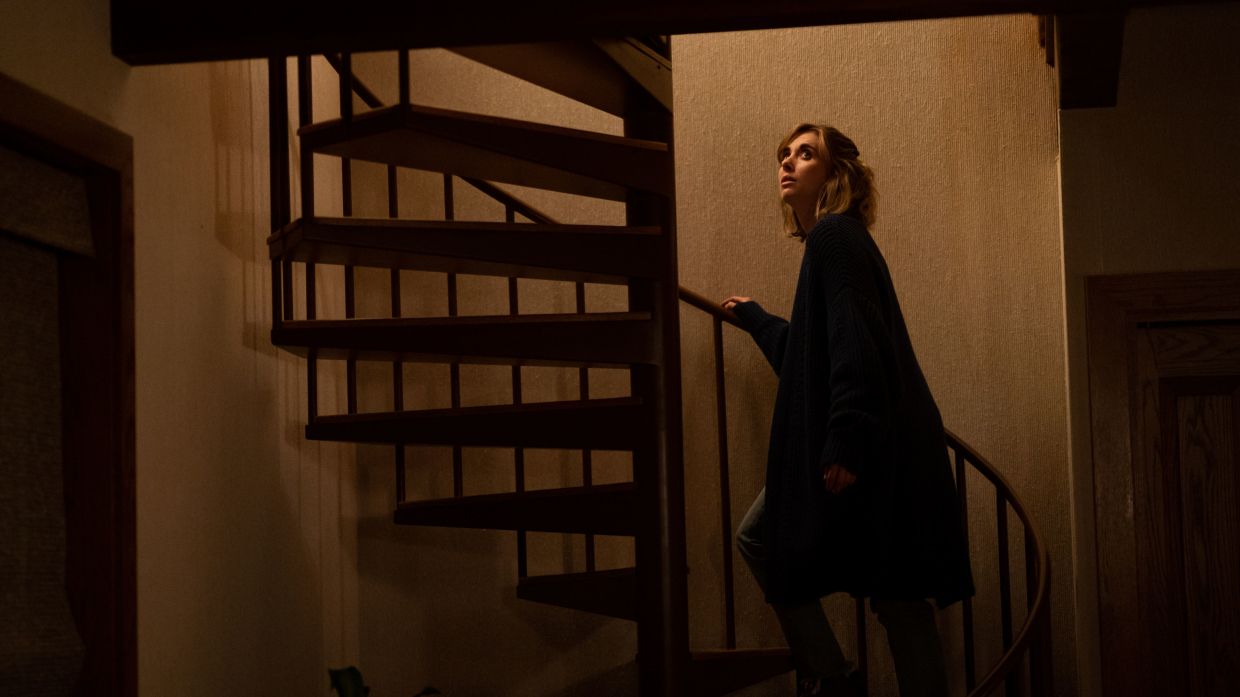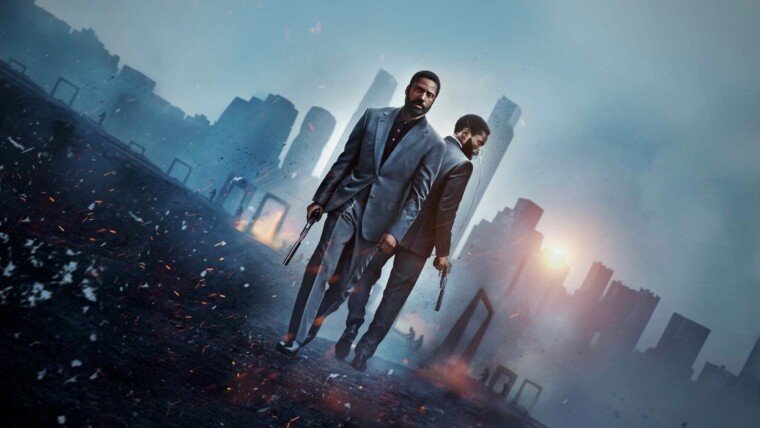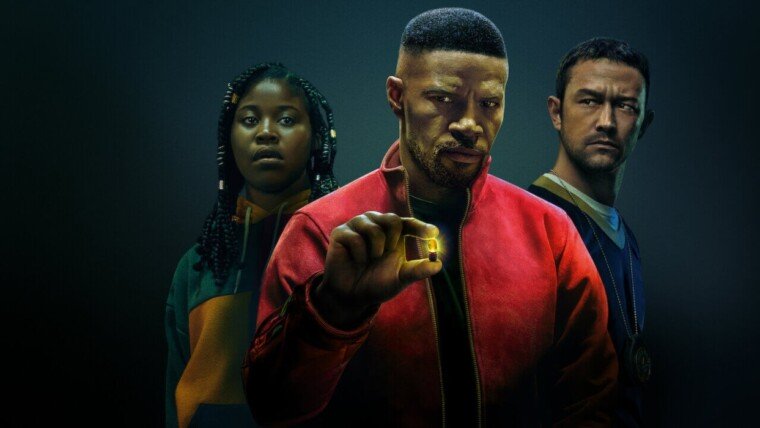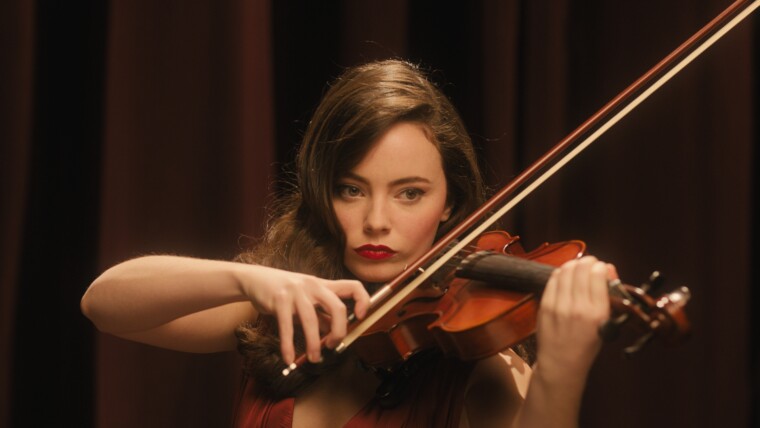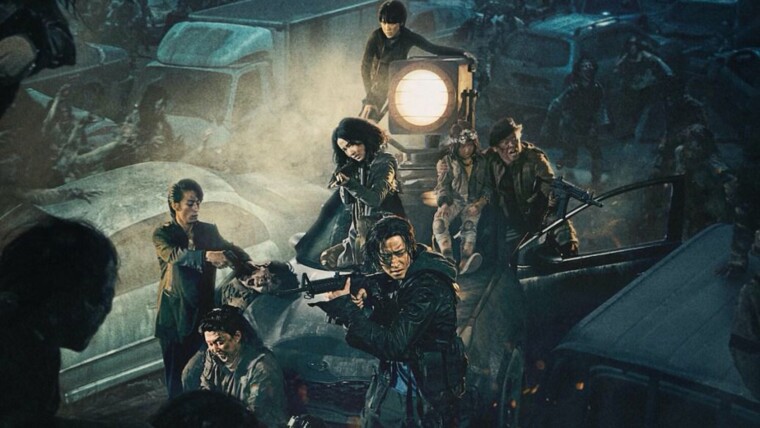Destination? Santiago.
Director? Dave Franco.
Hotel? Trivago.
Four friends, Charlie, Michelle, Mina, and Josh decide to get off their busy schedule and embark on a getaway by the week’s end. The group pick a rental by the shore with a pleasant view of the ocean. Nevertheless, Mina’s application to book the grounds is denied, and it is only when Charlie applies for the very same house that the rent-genie grants their wish, thus prompting the notion that the owner had a racial bias since Mina was the only member of the group who is not Caucasian.
So, our jolly good team isn’t off to a very good start. Despite the initial hiccup, this was not going to stop the weekend fun, so the group’s plan goes ahead as they journey to the edge of the world through a winding road in the forest (I almost expected a deer or something freaky to jump in front of their vehicle and force them to stop but, thankfully that did not happen).
Once they reach the secluded rental home, the landlord shows them in, but something seems off about the owner, particularly when he off puts Mina with a jarring question. He asks as to how she ended up getting mixed with this particular group of people, to which she expresses her bafflement and subsequent disappointment with his attitude. After the owner leaves, the five of them press on despite the strange circumstances, boarding the Pineapple Express to ensure their weekend stays intact. Wait… did I say five?
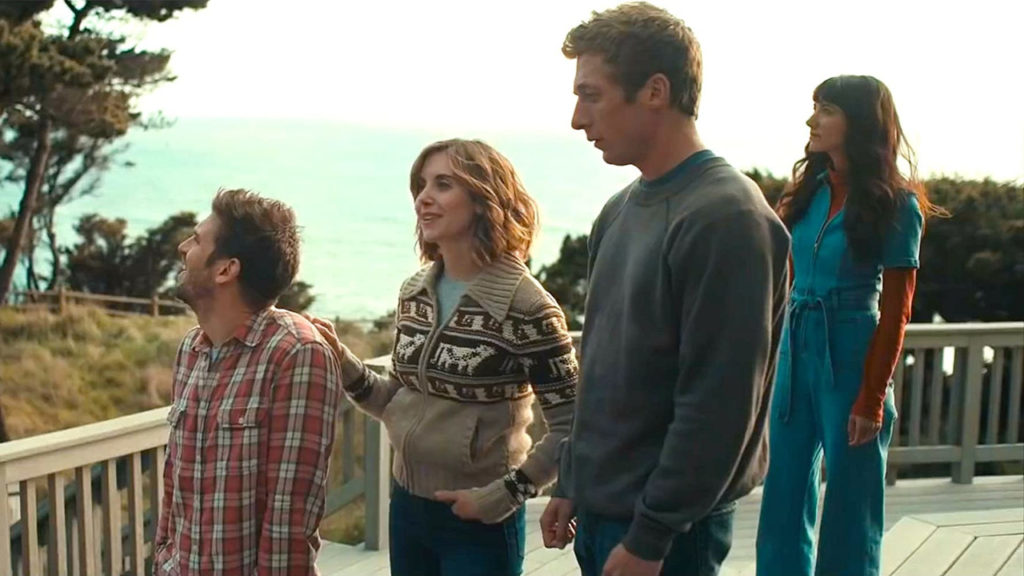
The Rental is the brainchild of the youngest Franco brother, Dave, making his directorial debut with this film. After making waves in films like 21 Jump Street and Now You See Me, it’s great to see another helming talent emerge from this family, with the elder, James, actively crafting films since 2005.
The premise of The Rental is not exactly fresh. I mean, how many times have we seen a group of buddies hop into a vehicle for a weekend getaway, things start off perfectly normal. Then they brush off that one strange occurrence before all hell breaks loose and it turns into a slasher/supernatural/monster horror flick. It’s a subgenre on its own: travel horror. Cabin In the Woods. The Evil Dead. Ari Aster’s most recent tale of the mid-summer. However, the aforementioned films are either campy classics or revered features. There are a ton of outings within the subgenre that have been neglected due to the lack of imagination and overall compel factor.
So, what makes the younger Franco’s endeavour stand out from the rest of the pack and avoid assimilation with the latter category? Well, for one, it actually makes an effort to subvert your expectations both in terms of its cinematic presence and plot. I mean, it’s not a very complex narrative that requires Nolan-binge-level concentration, squeezing every last bit of grey matter that you have. However, there is a conscious attempt to mislead the audience by deliberately withholding information, providing a certain intensity to the script. This is, at its a core, a horror flick, so, it helps that there is a whole mustard-splotch-load of suspense to accompany it.

Before I elaborate on that, I have to talk about the characters first, and this particular point might start off as a negative. Dave Franco brought his real-life partner, Alison Brie (Community, The Lego Movie) onto the project, whereby she plays Michelle, who we don’t really know anything about other than her being Charlie’s wife. On the other hand, in the role of Charlie is the other big name: Dan Stevens (Beauty and the Beast, Eurovision Song Contest: The Story of Fire Saga). Charlie runs his own company and is seemingly successful in running it as evidenced in the first scene of the film. Although Stevens is generally a serial show-stealer, especially when relating to movies like Eurovision, he doesn’t dominate in this, which can be a bit of a bane to the movie since there is not one presence that actually grasps at the audience well enough.
Now, the other two major leads, Mina and Josh, played by Sheila Vand (Argo, Triple Frontier) and Jeremy Allen White (After Everything), are depicted as a loving couple. Josh, who also happens to be Charlie’s younger brother, is a bratty man-child who’s had a history of being a felon due to his unchecked emotions. Mina, on the other hand, is sheepish, and as previously mentioned, the only person lacking a familial tie to the A-Team.
As you delve deeper into the narrative, it becomes more evident that the four of them are not conceived to be the likeable personalities that provide the audience with a conventional sense of care. As a matter of fact, they each possess a despicable quality, rotten and flawed. So, why bother? They aren’t worth investing your emotions on. They aren’t pure enough to consider screaming a concerned “LOOK OUT!” at the screen every time horror creeps upon them from within the foggy ocean bed. So, why root for them? Why? Why?

Despite being classified as a horror film, the strength of this film lies in it being a cautionary tale against the debauched cultures embodied by its characters. That’s what elevated it for me. With all the talks of “entanglements” this year, this is one piece that provides a commentary on such, highlighting the dangers of allowing oneself to be wrapped up within the nefarious tendrils of an affair. Lies. Greed. Misery. The hedonistic pleasures are souped-up to be the main villain despite the plot having a physical monster to stalk this group’s movements. Once the layers start peeling off and the characters begin pummeling down the point of no return, it just goes off the rails, with the legacy of lies that begins to pile.
When their stalker shows up, the movie does kick into full gear as the group find themselves fighting for their lives. It’s pretty creepy how the killer shows up in full view but not making his move until he is certain his prey is exposed. The grim reaper adds to their misery as their sins entangle them with more and more guilt, creating a vulnerability that the masked man is able to exploit.
Now, on an artistic standpoint, I really have to give it to Franco as he had a keen sense of what he wanted his audience to take note of; some of the frames centre on a particular subject, but are structured in such a manner that would either linger or conceal. One of my favourite shots in the film occurs during the opening, where Charlie and Josh are discussing the landlord’s alleged bias. Nevertheless, the camera focuses on Mina, her force of a smile as the ones closest to her betray her sensitivities.
This cinematic focus also provided a killer resolution, whereby the antagonist of the film is finally given the spotlight as the camera lingers on his physique. Wearing a face that Mike Michael Myers would be proud of, he observes his own presence in a mirror. Nonetheless, his identity is never revealed right to the film’s chilling end.
The sound design of the film is also distinguished. It does not necessarily aid jumpscares but raises the stakes with each horrific moment. In some way, it was akin to what Leigh Whannell’s Invisible Man remake executed, with the blaring pads and synth providing some much-appreciated suspense and thrills in a less-is-more approach.
This may be Franco’s first directorial credit in an indie but I am certainly fascinated. For someone who has grown weary of the crappy and uninspired modern horror films (looking at your stupid butt, The Sonata), I was pleasantly surprised by this outing. Although The Rental plays it safe and probably could have provided more gravitas to its characters, the direction and overarching message itself are riveting enough and actually made for an enjoyable experience.
Franco has discussed the possibility of a sequel, and to be frank-o, I’d be down for that. There are questions by the film’s end that I think have the potential to be explored further. The mythology, while relatively shallow and snappy, is intriguing enough to warrant more horrors. I certainly believe that, given more opportunities, Dave Franco could actually be one to look out for.
The Rental is currently playing in cinemas nationwide. The film is rated 18+ for strong language and violence.

